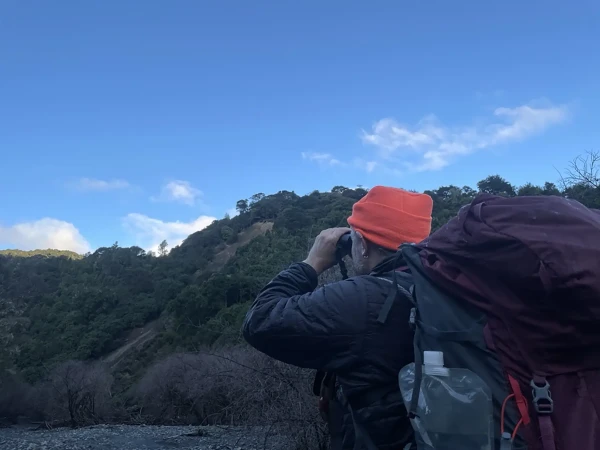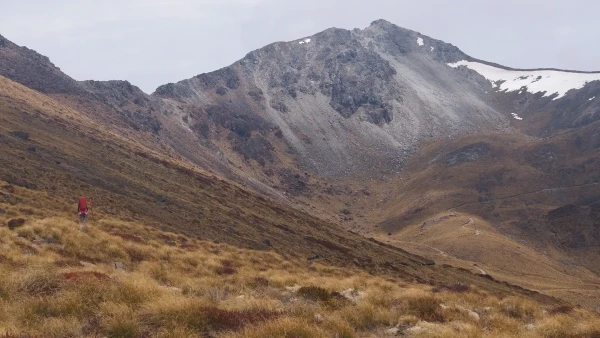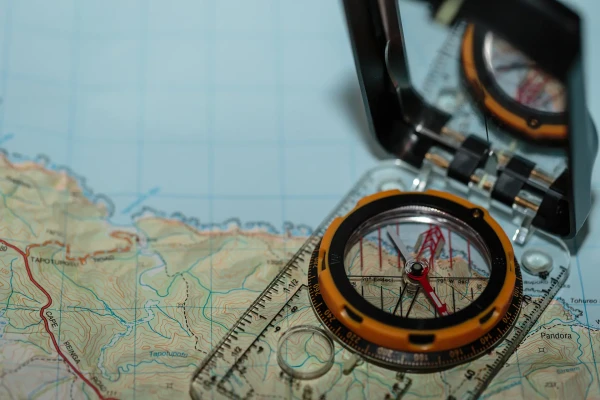February 2025
Satellite to Mobile: The Future of Emergency Communications
Changes in technology often result in changes to behaviour. In the outdoors, we have seen this over the past decade with mountain radios being replaced with other emergency communication devices, such as personal locator beacons and satellite messengers.
Aotearoa is on the cusp of the next technological change, with telecommunications companies starting to introduce satellite to mobile technology. With this survey we wanted to build an understanding of how this changing technology might affect the emergency communication device people take into the outdoors.
We had 1,469 responses to the survey, with people from across the full range of outdoor activities.
Core Findings
We asked what emergency communication devices people took on their outdoor trips in the past year.
96%
took a mobile phone
74%
took a personal locator beacon (PLB)
22%
took a satellite messenger (e.g., Garmin inReach, Spot X, ZOLEO)
3%
took a satellite phone
When asked what people would do when their PLB expires,
42%
would replace the battery
18%
would buy a new PLB
35%
hadn’t decided
5%
would retire the PLB and use a different communication device
Key reasons for taking a phone
Of respondents who think they’ll take just a phone when satellite-to-mobile technology becomes widely available, would do so for the following reasons:
- Convenience (82%)
- Saving money (72%)
- It meets all emergency communication needs (50%)
- It reduces the weight they carry (47%)
November 2024
How Hunters Get Fit for the Roar
Every year MSC runs a safety campaign for hunters taking part in the Roar. The Roar is a highlight of the hunting calendar, with thousands of hunters heading into the hills for the deer rutting season in March and April. During this period, the number of severe hunting injuries doubles compared to an average month, with 40% of severe injuries to the knee and shoulder.
Ahead of this year’s campaign, we surveyed our Adventure Voice hunting community to find out about their experiences of getting hunting fit. These findings have helped us develop our Roar safety campaign for 2025 and improve safety for the wider hunting community.
Core Findings
332 hunters
hunters in our Adventure Voice research community answered the survey.
1 in 7
said they had suffered an injury due to lack of fitness or fatigue
83% of 332
said being fit has helped them have a more enjoyable time on a hunt
73% of 332
said being fit has helped them cover more ground or challenging terrain.
Top Tips for Getting Fit for the Roar
Through the survey, we also gathered valuable information on the training activities hunters find most effective for preparing for a hunt and how they stick to their training.
Top four preferred training activities:
- Walking/tramping (78%)
- Shorter hunting trips (36%)
- Strength training, such as weights (35%)
- Wearing a pack while exercising (30%)
Top tips for sticking to fitness training:
- Going regularly (48%)
- Choosing an exercise I like (34%)
- Starting small and building up (25%)
- Having an exercise plan (21%)
- Going with a mate or mates (20%)
- Setting goals (18%)
Things that get in the way of fitness preparation included being time poor due to other commitments (61%) followed by lack of motivation (31%).
August 2024
Adapting on the Track: How Common is it to Change Plans in the Outdoors?
Our August Adventure Voice survey investigated how many respondents had changed their plans during an outdoor adventure and the factors leading to this decision. We set out to prioritise areas for enhanced safety messaging and identify education opportunities to help outdoor participants effectively monitor conditions on the go, and confidently make decisions around changing plans.
Core Findings
92% of 882
respondents said yes, they have changed their plans while on an outdoor adventure.
Of those who said no,
33% of respondents
have had an experience where they wished in hindsight they had changed their plans.
The two main factors influencing this decision, or leading people to wish they had changed their plans in hindsight, were:
- Weather conditions deteriorating (62%)
- Taking longer than expected (23%)
Notably, those doing a short walk were much more likely to change their plans due to track or warning signage (11%) than those on other adventures (5%).
Key Factors Prompting Plan Changes: Poor Weather and Underestimating Track Duration
We were pleased to see that 'changing plans on the go' is a very common occurrence in the outdoors. This survey confirms that at some point, most people will be in a situation where they will need to do this. Being prepared to change plans is essential and we have identified the following safety behaviours to promote:
- Check and understand the weather before leaving home.
- Prepare for deteriorating weather.
- Better gauge how long a track might take them.
- Assess the conditions while on the track so they can decide whether to continue or turn back, and be able to do so safely.
- Planning and identifying decision-making points on a track.
- Awareness of the ‘commitment’ heuristic trap and methods to avoid it.
May 2024
Investigating Preferred Navigation Tools in New Zealand's Outdoors
In May, we asked our Adventure Voice research community which navigation tools they use in the outdoors. With a better understanding of the tools people are using, we can create and deliver content that helps outdoor participants identify potential pitfalls with their tool of choice, and mitigate these with quality preparation and planning.
Core Findings
91% of 771
survey respondents said they use a mapping app on their phones to help with navigation.
72% of 771
survey respondents said they also used a printed map to help with navigation.
Phone Apps Overtake Traditional Map and Compass
We received over 700 responses, showing that phone apps are edging out the traditional map and compass for navigation. These results indicate a need for safety advice around protecting phones from damage, monitoring the battery and always having a backup.
Of the 771 respondents, 91% use a mapping app always (34%) or sometimes (57%), as opposed to 72% that either always (33%), sometimes (39%) or seldom (14%) take a map. Asked how frequently they carry a compass, 26% of respondents said never, while 59% said always (35%) or sometimes (24%).
Read our media release on this survey here.


